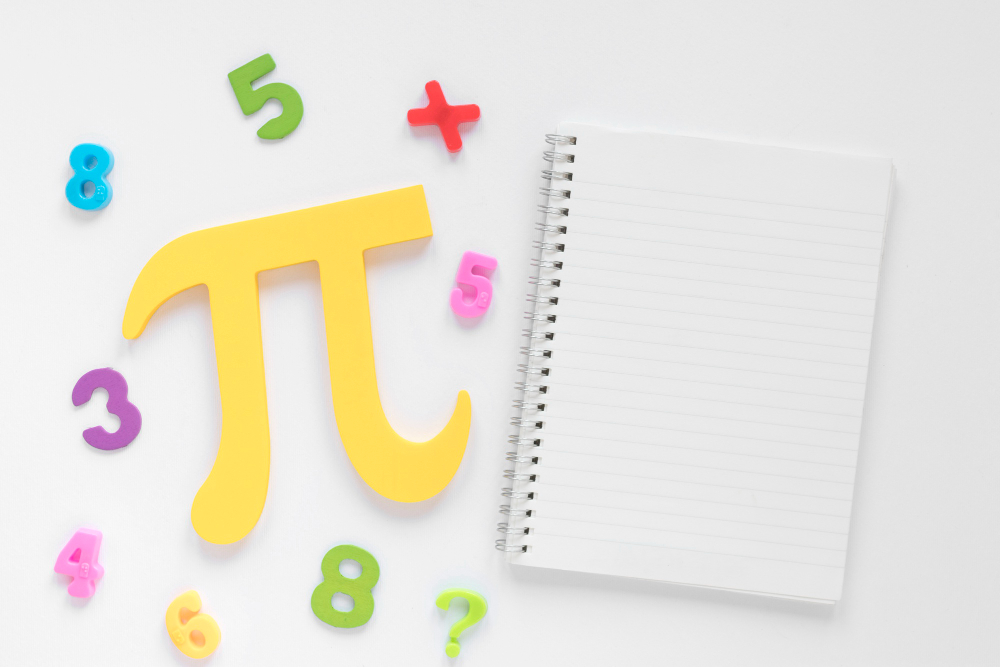There aren’t many constants in mathematics that captivate and enthrall like pi. This irrational number, represented by the Greek symbol π, has long captivated mathematicians, scientists, and fans. Pi, which is defined as the circumference divided by the diameter of a circle, is significant not only in geometry but also in many other fields of science and industry.
The Origin of Pi
Pi’s history begins in ancient civilizations, when different societies independently found estimations of its value. Pi was roughly 3.125 for the ancient Egyptians and Babylonians, although Archimedes and other ancient Greeks made great progress toward more precise calculations. Pi’s irrational and transcendental properties—that is, the fact that its decimal form neither ends nor repeats—kept it mysterious even in antiquity.
Pi in Geometry
Pi is a fundamental constant in geometry. It describes the connection between the diameter and circumference of a circle. Pi is always the same, roughly equal to 3.14159, regardless of the size of the circle. Because of this characteristic, it is crucial for figuring out the area and volume of solids and circular forms, which forms the foundation of calculus and trigonometry.
Calculating Pi
Accurately computing the digits of pi has long been a source of mathematical difficulty. While supercomputers and complex algorithms are used in current processing, geometric approaches and infinite series were used in earlier ways. There is still a search for additional pi digits, with records approaching billions of decimal places.
Within the field of mathematics, pi123 is a novel idea that goes beyond the boundaries of the well-known irrational number pi (π). Pi (π) is the ratio of a circle’s circumference to diameter; it is roughly equal to 3.14159. Pi123 extends this concept by investigating sequences or extensions that go beyond the parameters of the symbol.
What is Pi123?
Pi123 can be understood as a broad word in which ‘123’ denotes a modification or extension of pi (π). This extension may suggest various views of mathematics, including:
- Pi123 can refer to numbers that are arranged in a certain pattern or series that include the digits “123” following the decimal point. For instance, 3.14159265358979323846264338327950288419716939937510… (and so on) might be regarded as an example of a pi123 if the numbers follow an organized inclusion of ‘123’.
- In certain situations, pi123 may signify the investigation of pi (π) inside an expanded mathematical structure, surpassing its conventional interpretation. This could entail applications or theoretical developments in domains where sequences and patterns are important, such as number theory.
Exploring Mathematical Variations
Pi123 expands on the study of pi (π) by exploring areas beyond its straightforward definition. It asks mathematicians and math lovers to think about:
- Recognition of Patterns: Understanding and recognizing patterns in pi123 sequences can provide new perspectives on mathematical structure and randomness.
- Computational Difficulties: Pi123 sequences can be difficult to compute and analyze, frequently requiring sophisticated algorithms and large processing resources to examine their digits and characteristics.
Even though pi123 is not as widely understood as pi (π), its investigation highlights how imaginative and adventurous mathematics can be. In an effort to gain a deeper understanding of the nature of numbers and patterns, it pushes the limits of computation and theoretical investigation for mathematicians and computer scientists.
Pi123 is a fascinating expansion of the well-known pi (π), exploring sequences, patterns, and theoretical avenues beyond its conventional meaning. Pi123 is a monument to the continual development and curiosity in the field of mathematics, as mathematicians look into and create new mathematical constants and extensions.
Whether investigated for its computing difficulties, theoretical ramifications, or symbolic representations, pi123 contributes to our knowledge of mathematical constants and their uses in a variety of fields. It challenges us to consider the countless options and intricate details found in the world of patterns and numbers.

Leave a Reply